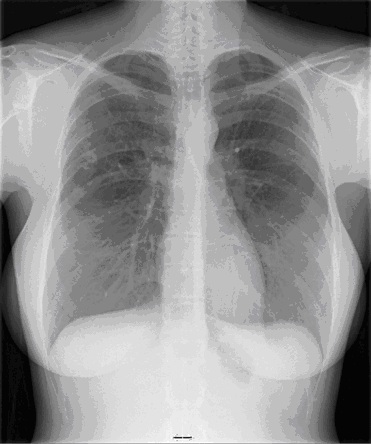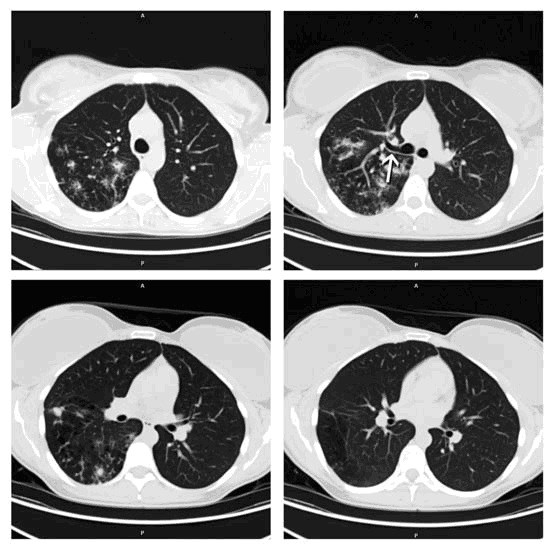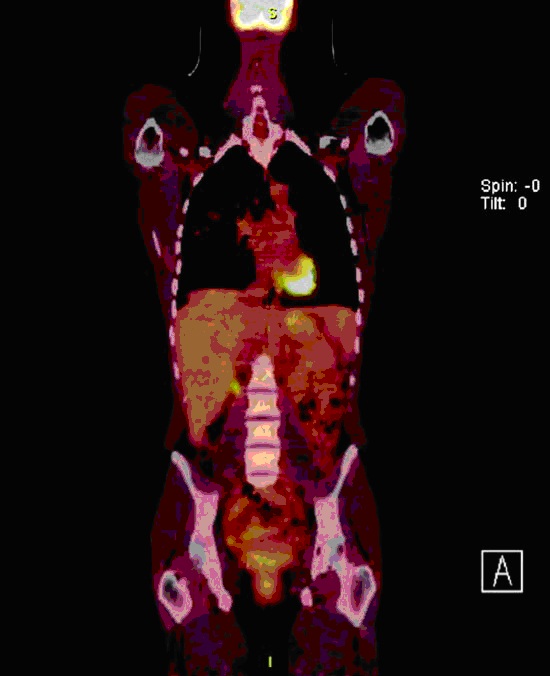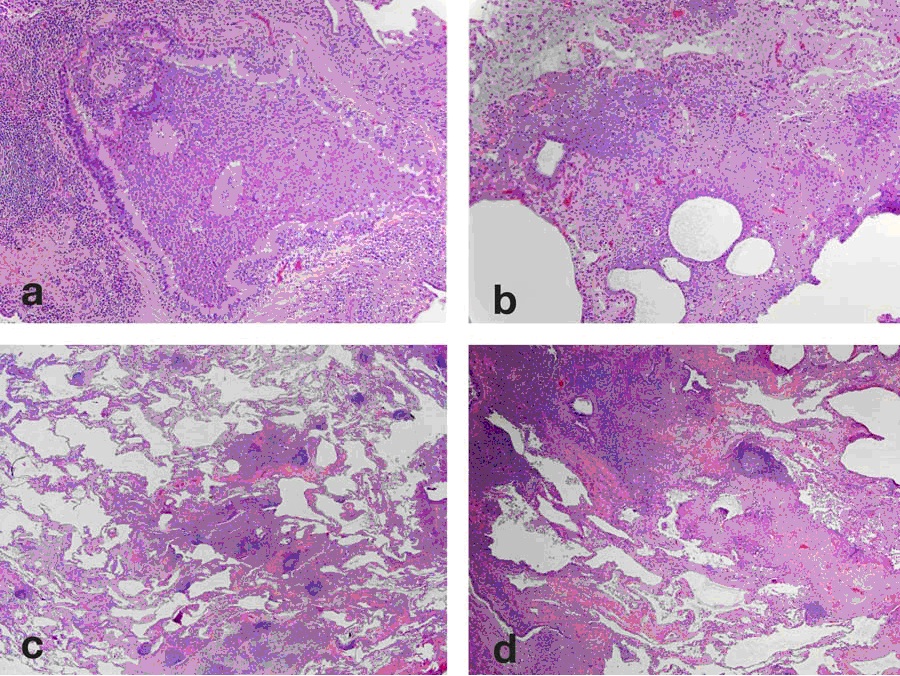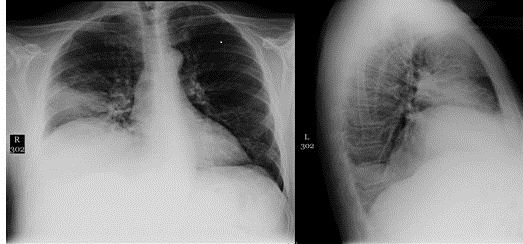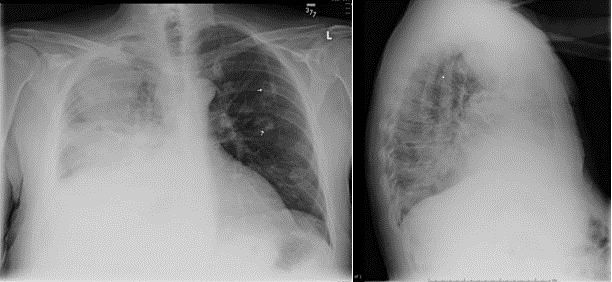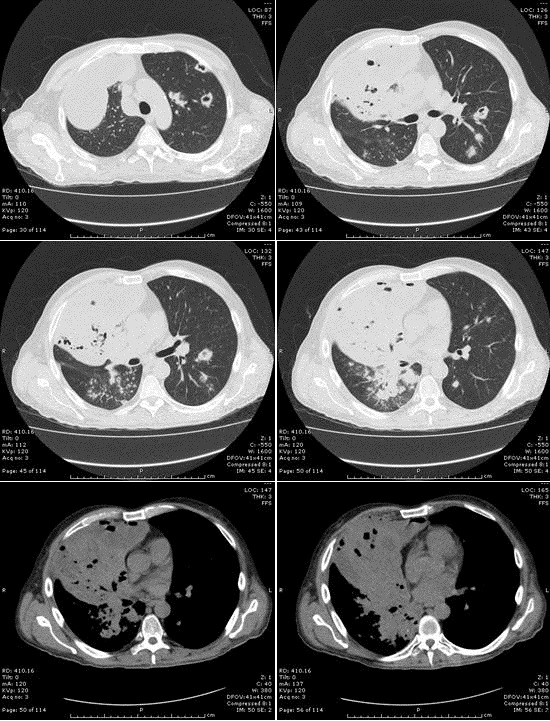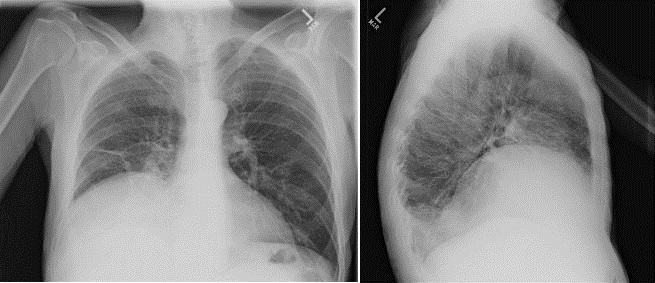Spirometry Use in Patients Prescribed Albuterol
 Friday, January 27, 2012 at 12:03PM
Friday, January 27, 2012 at 12:03PM Kevin Park, M.D.
Che' S. Ornelas, M.D.
Richard A. Robbins, M.D.
Phoenix VA Medical Center, Banner Good Samaritan VA Medical Center and the Phoenix Pulmonary and Critical Care Medicine and Research Foundation, Phoenix, AZ
Address correspondence to: Richard A. Robbins, M.D.
502 E. Vermont Drive
Gilbert, AZ 85295
E-mail: rickrobbins@cox.net
Conflict of Interest Statement: None of the authors have conflicts of interest pertinent to the subject matter of this manuscript.
Abstract
Background: Previous studies have shown that spirometry is obtained in only about a third of patients with chronic obstructive pulmonary disease (COPD) in primary care practice. This study evaluated spirometry use in persons prescribed an albuterol inhaler in the primary care clinics at a Veterans Administration (VA) hospital.
Methods: One hundred ninety-seven patients prescribed albuterol were reviewed for age, education level of the primary care practioners, other respiratory medications and diagnosis.
Results: The average age was 63.2 years (SD, 11.5), and 93% of patients were male. Obtaining spirometry was not age or sex-dependent but became more frequent with the use of tiotropium (72.2%), long-acting beta agonists (71.8%), ipratropium (69.4%) or inhaled corticosteroids (63.5%) compared to albuterol alone (39.4%, p=0.0007). Eighty of the patients had a diagnosis of COPD (40.6%), 40 a diagnosis of asthma (20.3%), 23 other respiratory diagnoses (11.7%) but 54 (27.4%) had no respiratory diagnosis. Patients diagnosed with COPD were more likely to have spirometry performed (71.2%) than patients diagnosed with asthma (35%), other respiratory diagnosis (34.7%) or no respiratory diagnosis (40.7%) (p=0.00068).
Conclusions: The above data demonstrate that spirometry is more frequently used in patients with COPD than previously reported and increases when additional medications are added to albuterol.
Introduction
Spirometry is recommended for the diagnosis of most adult respiratory disease including chronic obstructive pulmonary disease (COPD) and asthma (1-5). However, previous publications have revealed that in patients with COPD spirometry is performed in only about a third of the patients (6-10). Based on this data, we initiated a quality improvement project to examine compliance with spirometry guidelines in primary care.
Most previous investigations have examined patients’ diagnosis of COPD or asthma and examined the percentage of patients who had spirometry. However, the diagnosis of COPD or asthma is frequently incorrect (11-13). Furthermore, these projects may likely both under- and over-diagnose COPD in patients with no symptoms (14). Since albuterol is recommended as initial treatment for both diseases (1-4), we examined recent prescriptions for albuterol at a single VA medical center. Our rationale was that this should eliminate asymptomatic patients or patients with very mild disease. We found that in patients prescribed albuterol who also had a diagnosis of COPD that spirometry was performed over double (72%) of previous reports.
Methods
This project was approved by the institutional review board of the Carl T. Hayden VA Hospital. Using VA records we identified 200 patients seen in primary care who were prescribed an albuterol inhaler and had a primary care visit between November 1-5, 2010 or November 8-12, 2010. The electronic records were reviewed for each patient. Demographic data (age, sex); education level of provider (MD or DO, nurse practioners); diagnosis (COPD, asthma, other respiratory diagnosis or no diagnosis); other respiratory medications, and the presence of spirometry were recorded. When spirometry was available for COPD patients, spirometric values of FEV1/FVC% or FEV1% predicted were recorded and used to classify COPD severity based on the Global Initiative for Chronic Obstructive Lung Disease (GOLD) criteria (1,15).
Statistical Analysis
Comparisons between the groups with and without spirometry were made with χ2 tests for categoric variables and t tests for continuous variables. The association between having spirometry performed and patient characteristics was evaluated in unadjusted models.
Results
Chart review
Two hundred charts were examined, but 3 patients were excluded, one because they had not been prescribed albuterol and two because of incomplete data. The remaining 197 patients were evaluated.
Demographics
Age was 63+11 years and 7% of the patients were female. Age and sex were not significantly different between those who had spirometry and those who did not (data not shown, p>0.05 both comparisons).
Education Level of Provider
There were 16 MD or DO physician primary care providers and 8 nurse practioners. The physicians saw 136 patients and the nurse practioners 61. Spirometry was present on 73 of the patients seen by physicians (53.7%) and 29 of the patients seen by nurse practioners (47.5%, p=0.45).
Other Respiratory Medications
Numbers of patients with other respiratory medications are shown in Table 1. Many patients were on multiple medications. Patients on albuterol alone were significantly less likely to have spirometry than those on other medications (p=0.0007). Only two patients were receiving theophylline and one oral prednisone.
Table 1. Spirometry and other respiratory medications prescribed

LABA=Long-acting beta agonist
ICS=Inhaled corticosteroid
*p=0.0007 compared to other medications
Diagnosis
COPD was diagnosed in 80 patients (40.6%), asthma in 40 patients (20.3%), other respiratory diagnosis in 23 patients (11.7%) but no respiratory diagnosis was recorded in 54 patients (27.4%). Other respiratory diagnosis included 10 patients with tobacco dependence, 3 with dyspnea, 2 with lung carcinoma, and 2 with obstructive sleep apnea and one each with allergies, cannabis dependence, sinusitis, coin lesion, pulmonary embolus and respiratory disorder not otherwise specified. Patients with COPD were significantly more likely to have spirometry performed than other diagnosis (Table 2).
Table 2. Spirometry and respiratory diagnosis

*p=0.00068 compared to other diagnosis
Of the 57 patients with COPD and spirometry, 5 had very severe disease (FEV1 <30% predicted), 16 had severe disease (30% < FEV1< 50% predicted), 34 had moderate disease (50% < FEV1 < 80% predicted) and 2 had mild disease (FEV1>80% predicted) by GOLD criteria. Six of the 18 COPD patients without spirometry were receiving albuterol alone compared to 11 of the 57 of the COPD patients with spirometry (p=0.5519).
Discussion
The objective of this study was to examine spirometry use in primary care in patients with prescribed albuterol. Overall, the presence of spirometry in patients was low, with only 51.8% of patients having spirometry performed during the analysis period. Patients diagnosed with COPD or who had additional respiratory medications prescribed in addition to albuterol were more likely to undergo spirometry. In the present study, 71.8% of patients with COPD received spirometry. This is more than twice the percentage of previous reports where only about a third of COPD patients had spirometry performed (6-10).
Spirometry is performed in some general medicine clinics, but in our hospital spirometry is performed in the pulmonary function laboratories or in the pulmonary clinic, a situation that may differ from many health-care systems. However, a previous report from a VA hospital reported only about a third of newly diagnosed COPD patients received spirometry (7). Our study differs in several aspects which might explain at least part of the variance. First, rather than looking at a diagnosis of COPD, we examined patients who were prescribed albuterol. This includes patients with asthma and other respiratory diagnosis. Second, we included patients with long-standing COPD rather COPD recently diagnosed. Previous reports suggest that as the number of visits increases that the likelihood of spirometry also increases (10). Third, many patients are “co-managed”, that is they received health care elsewhere in addition to the VA. It is entirely possible that they may have had spirometry performed elsewhere which is not available in our medical record. However, in contrast to previous studies, chart reviews were performed on each patient. If the patient had a previous spirometry recorded in the chart from another institution this should have been noted in our study. Fourth, the VA pharmacy placed restrictions on primary care physicians prescribing long-acting bronchodilators, especially tiotropium. These patients were usually referred to our pulmonary clinic where spirometry was usually required prior to referral.
Several factors have been previously identified that are related to lower rates of spirometry. Age had been reported as the factor with the most pronounced impact on decreasing the likelihood of undergoing spirometry in a VA population (6). However, we found no influence of age on the likelihood of spirometry performance. COPD diagnosis has also been reported to have a decreased likelihood of spirometry performance (8), but in contrast, we found that COPD actually increased the likelihood of spirometry performance. The use of theophylline has also been associated with decreased levels of spirometry performance. However, only about 1% of our patients were prescribed theophylline.
There are several limitations to our study. First, it is a single site study. It is possible that our primary care physicians are more likely to order spirometry because of increased awareness or restrictions in prescribing long-acting bronchodilators or referral to a pulmonary clinic. Previous reports from the VA have demonstrated that there is a large geographic variation in the use of spirometry to diagnose COPD (8). The location of the present study was in Veterans Integrated Service Network 18 (Arizona, New Mexico and West Texas) where spirometry use (36.9%) approximated the National mean (36.7%). It is unclear whether the results from the present study can be generalized to the VA as a whole or non-VA institutions is unclear. Second, we examined patients prescribed an albuterol inhaler rather than those with a diagnosis of COPD or asthma. This likely eliminates many patients with mild or no symptoms which differs from previous studies. The US Preventive Services Task Forces has recommended against screening asymptomatic patients with spirometry (16).
The patients with no diagnosis given albuterol were a heterogenous group and the indications for the use of albuterol were often absent or unclear. Although albuterol can be empirically prescribed for asthma, cough or COPD, the indications for albuterol were absent in the majority of charts.
This study suggests that in contrast to previous reports, much of the current COPD diagnosis and management is based on spirometric evidence of airway obstruction in addition to symptoms. Although the role of spirometry in routine clinical practice remains unclear, primary care providers at our VA hospital appear to frequently use spirometry in patients with COPD.
References
- Global Strategy for the Diagnosis, Management and prevention of Chronic Obstructive Pulmonary Disease 2011. Global Initiative for Chronic Obstructive Lung Disease (GOLD) www.goldcopd.com (accessed 1/26/11).
- Qaseem A, Wilt TJ, Weinberger SE, Hanania NA, Criner G, van der Molen T, Marciniuk DD, Denberg T, Schünemann H, Wedzicha W, MacDonald R, Shekelle P; American College of Physicians; American College of Chest Physicians; American Thoracic Society; European Respiratory Society. Diagnosis and management of stable chronic obstructive pulmonary disease: a clinical practice guideline update from the American College of Physicians, American College of Chest Physicians, American Thoracic Society, and European Respiratory Society. Ann Intern Med 2011;155:179-91.
- National Committee for Quality Assurance. HEDIS 2006: health plan employer data & information set, vol 2; technical specifications. Washington, DC: National Committee for Quality Assurance, 2005; 350
- Expert panel report 3 (EPR3): Guidelines for the Diagnosis and Management of Asthma. NHLBI. Available at: http://www.nhlbi.nih.gov/guidelines/asthma/asthgdln.htm (accessed 12/10/11).
- Reddel HK, Taylor DR, Bateman ED, Boulet LP, Boushey HA, Busse WW, Casale TB, Chanez P, Enright PL, Gibson PG, de Jongste JC, Kerstjens HA, Lazarus SC, Levy ML, O'Byrne PM, Partridge MR, Pavord ID, Sears MR, Sterk PJ, Stoloff SW, Sullivan SD, Szefler SJ, Thomas MD, Wenzel SE; American Thoracic Society/European Respiratory Society Task Force on Asthma Control and Exacerbations. An official American Thoracic Society/European Respiratory Society statement: asthma control and exacerbations: standardizing endpoints for clinical asthma trials and clinical practice. Am J Respir Crit Care Med 2009;180:59-99.
- Han MK, Kim MG, Mardon R, et al. Spirometry utilization for COPD: How do we measure up? Chest 2007;132:403-09.
- Lee TA, Bartle B, Weiss KB. Spirometry use in clinical practice following diagnosis of COPD. Chest 2006;129(6):1509-15.
- Joo MJ, Lee TA, Weiss KB. Geographic variation of spirometry use in newly diagnosed COPD. Chest 2008;134:38-45.
- Arne M, Lisspers K, Ställberg B, Boman G, Hedenström H, Janson C, Emtner M. How often is diagnosis of COPD confirmed with spirometry? Respir Med. 2010;104:550-6.
- Anthonisen NR, Woodlrage K, Manfreda J. Use of spirometry and respiratory drugs in Manitobans over 35 years of age with obstructive lung diseases. Can Respir J 2005;12:69-74.
- Marklund B, Tunsäter A, Bengtsson C. How often is the diagnosis bronchial asthma correct? Fam Pract 1999;16:112-6.
- Tinkelman DG, Price DB, Nordyke RJ, Halbert RJ. Misdiagnosis of COPD and asthma in primary care patients 40 years of age and over. J Asthma. 2006;43:75-80.
- Zwar NA, Marks GB, Hermiz O, Middleton S, Comino EJ, Hasan I, Vagholkar S, Wilson SF. Predictors of accuracy of diagnosis of chronic obstructive pulmonary disease in general practice. Med J Aust 2011;195:168-71.
- Enright P. Use and abuse of office spirometry. Primary Care Respiratory Journal 2008;17: 238-242.
- Knudson RJ, Lebowitz MD, Holberg CJ, Burrows B. Changes in the normal maximal expiratory flow-volume curve with growth and aging. Am Rev Respir Dis 1983;127:725-34.
- US Preventive Services Task Force. Screening for Chronic Obstructive Pulmonary Disease Using Spirometry. Available at http://www.uspreventiveservicestaskforce.org/uspstf08/copd/copdrs.htm (accessed 12/12/11).
Reference as: Park K, Ornelas CS, Robbins RA. Spirometry use in patients prescribed albuterol. Southwest J Pulm Crit Care 2011;4:25-9. (Click here for a PDF version of the manuscript)



